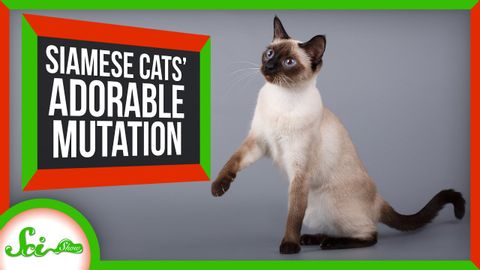シャム猫に潜む愉快な異変 (The Delightful Mutation Behind Siamese Cats)
林宜悉 が 2021 年 01 月 14 日 に投稿  この条件に一致する単語はありません
この条件に一致する単語はありませんUS /ˈɛpɪˌsod/
・
UK /'epɪsəʊd/
US /ɪˈsenʃəli/
・
UK /ɪˈsenʃəli/
US /ɪk'strimlɪ/
・
UK /ɪkˈstri:mli/
- n. (c./u.)模範 : 見本;模様 : 柄;様式;規則性;型紙
- v.t.模倣する;模様をつける
エネルギーを使用
すべての単語を解除
発音・解説・フィルター機能を解除

